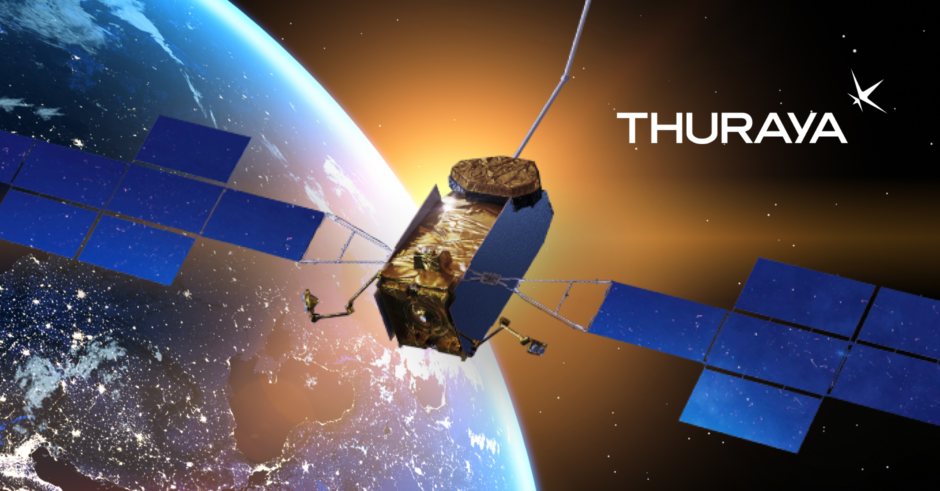
Why is the T4 replacing the T2?
The primary reason for the upgrade is that Thuraya 2 is long past its design life. Launched in June 2003 with an expected lifespan of roughly 12 years, Thuraya 2 has now been in service for over two decades. Ageing hardware and diminishing performance prompted Thuraya to seek a modern replacement ahead of potential issues arising.
The new system is a technological leap forward. Built on Airbus’s Eurostar Neo platform, T4 boasts a 12 m L-band antenna and advanced onboard processing. This architecture supports up to 3,200 dynamically allocated channels, reconfigurable beam patterns and speeds exceeding 1 Mbps, enabling it to deliver improved data rates, resilience and security.
The T4 offers expanded coverage and enhanced services
Compared to its predecessor, the T4 is capable of broader footprints across Europe, the Middle East, Africa and Central Asia, as well as parts of Eastern Europe and Russia. New services include:
- Faster broadband and VSAT+
- Push-to-talk and aero communications
- IoT/M2M connectivity
- Secure government traffic
The system is also future-ready by unlocking new capabilities such as direct-to-device (D2D) services, 5G/6G integration and next-generation IoT applications. T4 also supports Yahsat/Space42’s strategy to roll out 15+ new products.
T4’s timeline and development
Here’s a rundown of what has happened so far and when to expect further developments.
- T4 launch (3-4 January 2025): Aboard SpaceX Falcon 9; enters 44°E orbital slot
- Service entry (H2 2025): Full commissioning expected by mid-2025
- Platform deployment (Eurostar Neo): Supports flexible, on-orbit reconfiguration
Backward compatibility and encryption
Thuraya has confirmed that all existing L-band user terminals (including the XT-PRO, XT-LITE, SatSleeve and others) will work seamlessly on T4. Voice and data services, current encryption standards and terminal signalling protocols remain unchanged to ensure a smooth transition.
- Customer continuity: No hardware upgrades or reconfigurations required
- Military and government use: Stable, certified encryption environments preserved
- Platform flexibility: Eurostar Neo enables additional onboard features without altering the core L-band waveform
Alongside this, T4 introduces enhanced encryption modes for new government, enterprise and future 4-NGS terminals that support dual-mode L-band/Ka-band, as well as secure D2D and IoT channels.
Additional key elements of the T4
There are a number of other features that set T4 apart from the T2, including:
- Completely new spotbeam layout
T4’s reconfigurable spotbeam architecture replaces T2’s fixed grid. Hundreds of narrow spotbeams can be dynamically shaped, moved and resized to match demand.
- Onboard digital beamforming
Real-time control of beam allocation allows capacity to shift instantly to high-demand areas, such as maritime corridors, military zones and disaster relief sites.
- Expanded and tuneable coverage
Coverage now spans Europe, the Middle East, Africa, Central and South Asia, and parts of Russia. Beams can be tuned specifically for IoT clusters, government footprints or aero connectivity.
- Interoperability with future beams
T4’s beam map lays the groundwork for multi-orbit and multi-band services. L-band spotbeams integrate with Ka-band feeder links, enabling dual-layer connectivity down the line.
The future of satellite systems has arrived
Thuraya 4 represents a decisive upgrade over its ageing predecessor, offering vastly improved capacity, coverage, flexibility and future-proof technology, all while maintaining seamless support for existing terminals and services. With BlackFish™ ready to deliver end-to-end solutions, users can look forward to reliable, high-performance connectivity from September 2025 and beyond.


